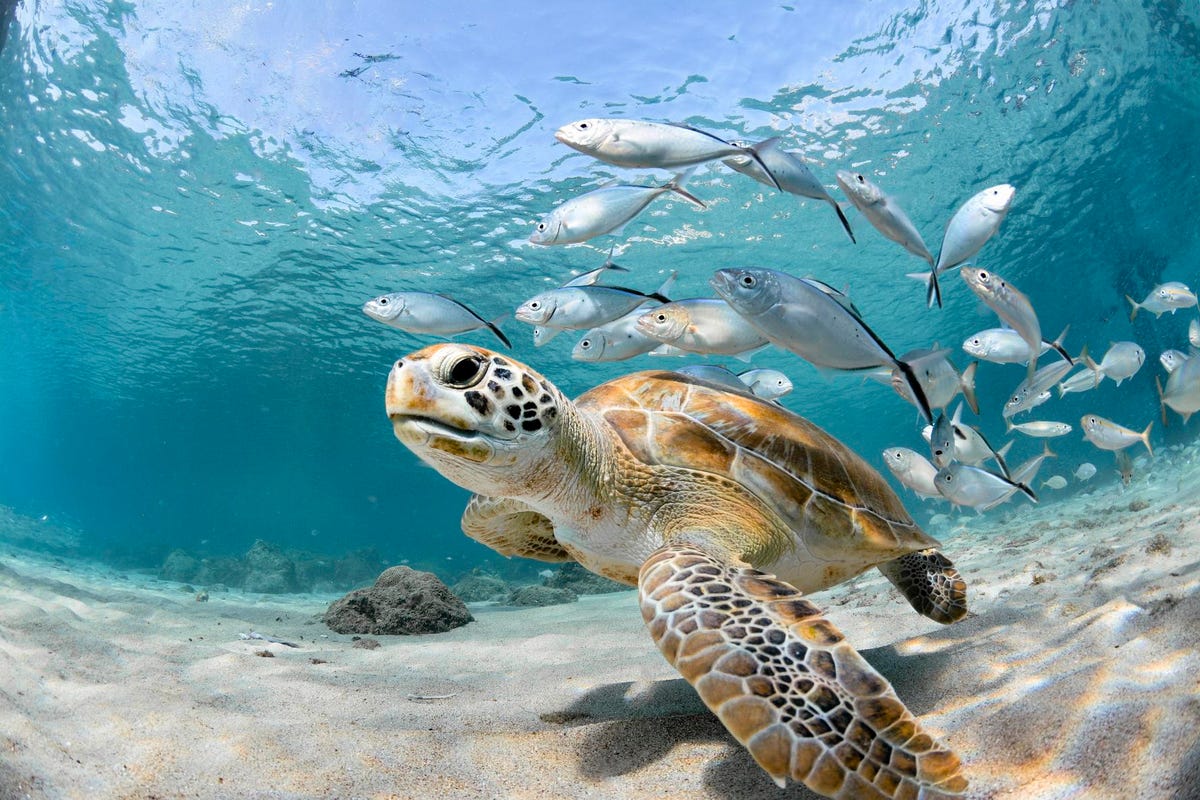
World-changing leaders like those at Ocean Conservancy can show growing companies how to achieve big … [+]
A lot of us are working on our big goals. Navigating how to nurture a thriving team in the midst of disruption, serving as first responders and health workers to address the pandemic, running a home school while seeking a big promotion at work.
Some are focused on even bigger goals. World-changing goals. Transforming healthcare. Revitalizing communities. Fighting forest fires.
Nicholas Mallos is saving the oceans. A marine biologist who leads Ocean Conservancy’s Trash Free Seas initiative, Mallos is working on what might seem like an insurmountable challenge. Ocean Conservancy predicts that, without stronger action, more than 250 million tons of plastic will circulate in the ocean by 2025. The World Wildlife Fund reports that 52% of sea turtles have eaten plastic, often mistaking plastic bags for jellyfish, which causes starvation and death. National Geographic reports that once plastic enters the ocean currents, it is deposited all over the world.
Discouraging facts, indeed. But change-the-world people inspire us in their pragmatic determination to reverse this troubling trend. Where others might feel angry and helpless, people like Mallos get to work at making change.
Ocean Conservancy reports that more than 16 million volunteers have gathered 341+ million pounds of trash since 1986. Its Trash Free Seas initiative seeks to accelerate that.
How might leaders with their own big goals hatch a plan to overcome seemingly insurmountable odds? I caught up with Mallos to break it down.
1. Gather good data.
MORE FOR YOU
Every solid solution starts with identifying the problem to solve. In the case of ocean plastic, the problem is obvious, with credible data to support it. A study conducted with Accenture identified five key countries that contribute the most ocean trash. By changing the dynamic in these countries, the plastic issue can be reduced significantly. And by identifying these specific countries, advocates can focus their efforts.
What you can do: To solve your big problem, identify what causes it in the first place, because it might not be what you think. Here’s where data comes in. Document what is contributing to your problem. Although you may not have a budget to work with a global research firm, you have access to plenty of ways to gather data. A deep Google search may be a start, where you can identify experts or studies in this area, and dig deeper to identify what’s contributing to the problem.
2. Understand your audience.
“Understanding the audience is paramount to the likelihood of success,” said Mallos. He talks about establishing a common language and being willing to be proven wrong as part of the process. For example, in some communities, the issue is not so much tied to environmental impact but to sanitation and public health. Differing views of the problem may reveal innovative solutions.
Policy needs to get incentives right. Clearly a government in the Philippines will have different challenges than a government in the state of Maryland. However, both types of governments might understand the impact of $1.3 billion in lost revenue from the tourism, fishing and shipping industries.
What you can do: Research your audience and what issues are important to them. If your elected officials have budget concerns about keeping the fire department and schools staffed, perhaps your plan can offer solutions sponsored by community leaders. If you want to persuade a consumer audience, identify ways for them to model the desired behavior. Humorist author and radio commentator David Sedaris is a master at modeling behavior. He’s picked up so much litter in his West Sussex, England neighborhood that the community named a waste vehicle for him in gratitude.
3. Identify actionable goals
Mallos outlines the goals of Trash Free Seas as pretty straightforward: Make less plastic, use less plastic, keep it out the water, clean it up. The strategies that deliver on these goals might be a little more complex. For example, the organization addresses how to disincentivize companies against making single use plastic, encouraging consumers to use less, designing better ways for communities to collect the plastic before it goes into one of the 1,000+ rivers identified as the primary sources of ocean plastic.
What you can do: Break down your big goals in terms of how you will measure results. Where Ocean Conservancy calculates pounds of trash as one measure, determine what metrics will illustrate your progress. Next, identify the interim steps that will get you to that ultimate success measure. And make your own policy playbook that explains your plan and specific recommendations to potential supporters.
4. Hold your optimism.
A sense of hope and optimism is essential to build and sustain momentum. When asked how he keeps motivation high, Mallos points to the successful clean-up events, the growing availability of information and increasing concern for the environment.
“This is a big wicked problem. And yet there’s never a better time to come at it,” he said. “We as individuals have a lot of power.”
And there’s plenty reason for optimism as companies find innovative ways to address the problem. One example is New Zealand-based Better Packaging Co., which pays coastal communities to collect plastic from beaches and rivers to recycle into shipping package materials.
What you can do: In the face of all there is to do, be sure to document how far you’ve come. All the micro-successes along the way that indicate you’re heading in the right direction, or at least the learning that indicated a course correction.
And remember the famous quote from Steve Jobs: “The ones who are crazy enough to think they can change the world are the ones who do.”







